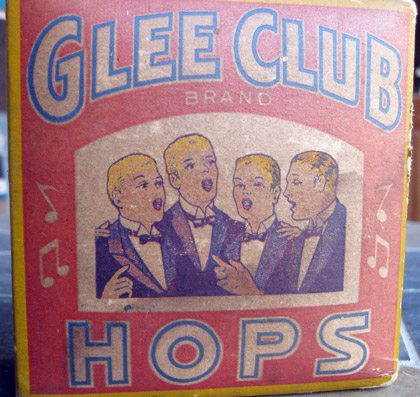
We’re almost done unpacking stuff we stuck away during our grand journey.
Yesterday I hauled out small beer items that decorate the tops of book shelves in the guest bedroom and office, including boxes of hops from the Prohibition era and before. In the 18 months the Glee Club box spent in hiding it became more topical, so here’s a photo.
What did people do with these hops, most sold in boxes that held two to eight ounces? Here are the instructions from a box of Rose Hops packed by E. Clemens Horst Co. in San Francisco, “Largest Hop Growers in the World.”
TO START YEAST-Boil one-half pound Rose Grand Hops in one gallon water, half an hour; strain, and stir in one-half pint fine malt flour, strain again through a coarse cloth, and boil for ten minutes; when lukewarm, stir in one-half pound brown sugar, place in a jug, and keep in a warm place until it works over, then cork tight and keep in a cool place for use.
HOP YEAST-Boil one ounce of Rose Brand Hops in three pints of water, twenty minutes. Strain into a jar, and stir in one teacupful flour, one tablespoonful brown sugar, one teaspoonful salt. When cooled to blood heat, ad one gill yeast. After standing for or five hours, put away for use in jugs, with cork securely tied.
 I’m a sucker for a story that begins . . .
I’m a sucker for a story that begins . . .